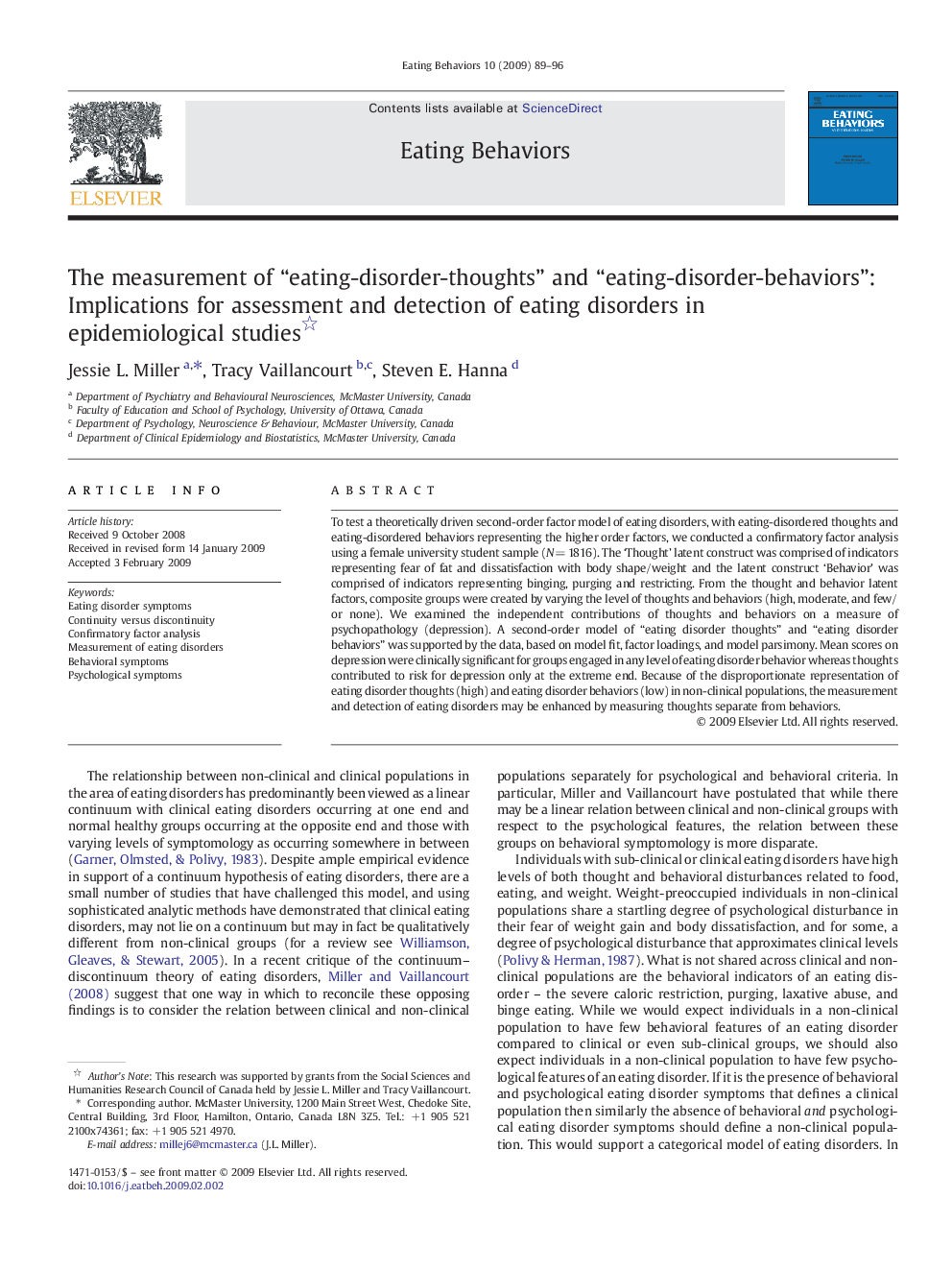| کد مقاله | کد نشریه | سال انتشار | مقاله انگلیسی | نسخه تمام متن |
|---|---|---|---|---|
| 906848 | 917027 | 2009 | 8 صفحه PDF | دانلود رایگان |

To test a theoretically driven second-order factor model of eating disorders, with eating-disordered thoughts and eating-disordered behaviors representing the higher order factors, we conducted a confirmatory factor analysis using a female university student sample (N = 1816). The ‘Thought’ latent construct was comprised of indicators representing fear of fat and dissatisfaction with body shape/weight and the latent construct ‘Behavior’ was comprised of indicators representing binging, purging and restricting. From the thought and behavior latent factors, composite groups were created by varying the level of thoughts and behaviors (high, moderate, and few/or none). We examined the independent contributions of thoughts and behaviors on a measure of psychopathology (depression). A second-order model of “eating disorder thoughts” and “eating disorder behaviors” was supported by the data, based on model fit, factor loadings, and model parsimony. Mean scores on depression were clinically significant for groups engaged in any level of eating disorder behavior whereas thoughts contributed to risk for depression only at the extreme end. Because of the disproportionate representation of eating disorder thoughts (high) and eating disorder behaviors (low) in non-clinical populations, the measurement and detection of eating disorders may be enhanced by measuring thoughts separate from behaviors.
Journal: Eating Behaviors - Volume 10, Issue 2, April 2009, Pages 89–96